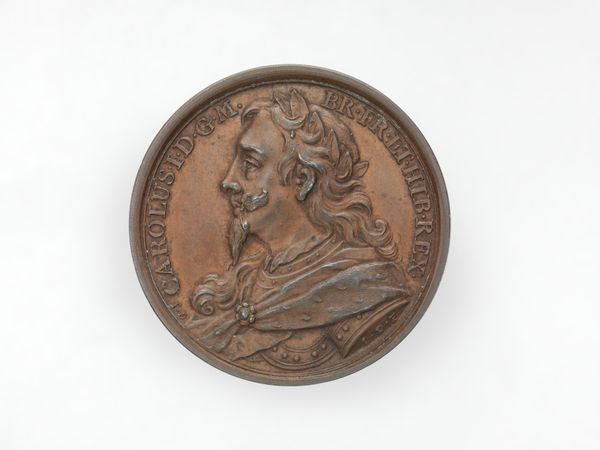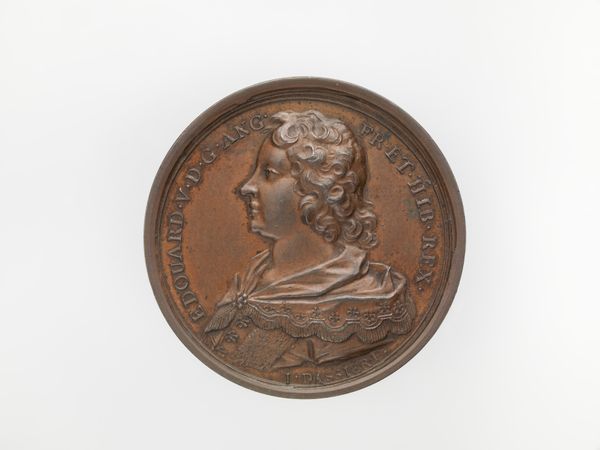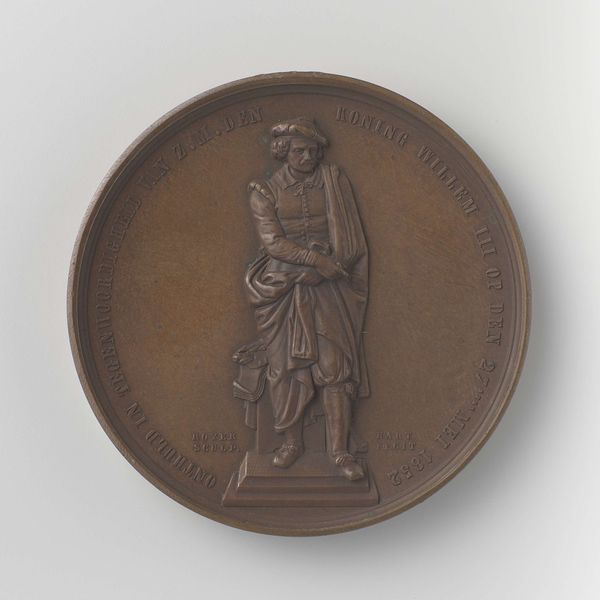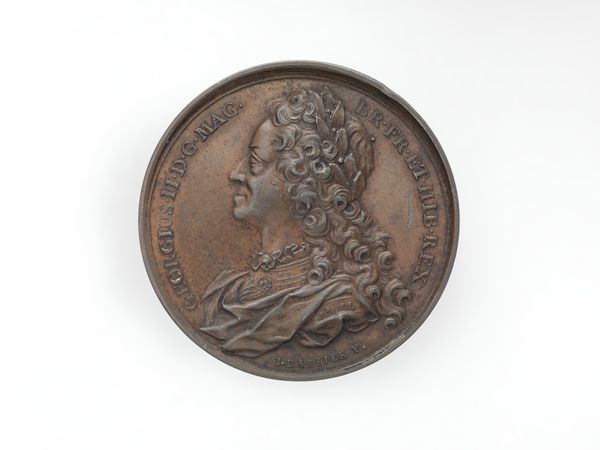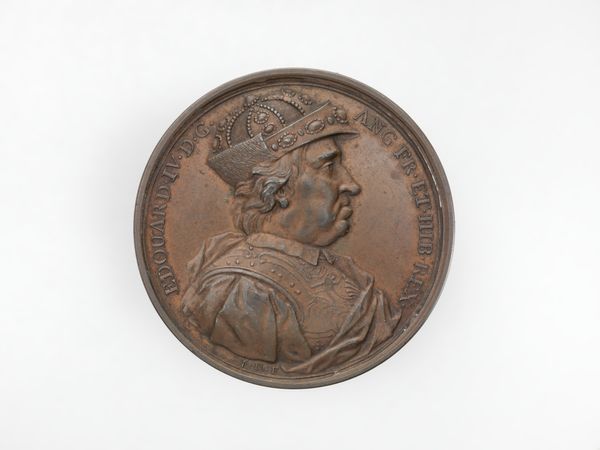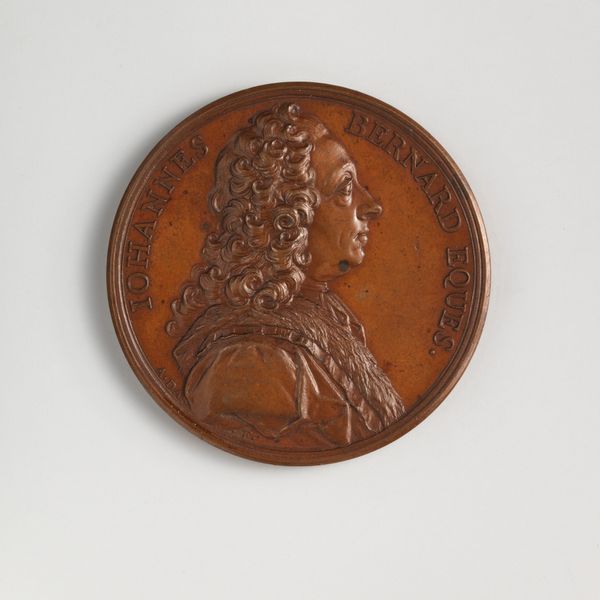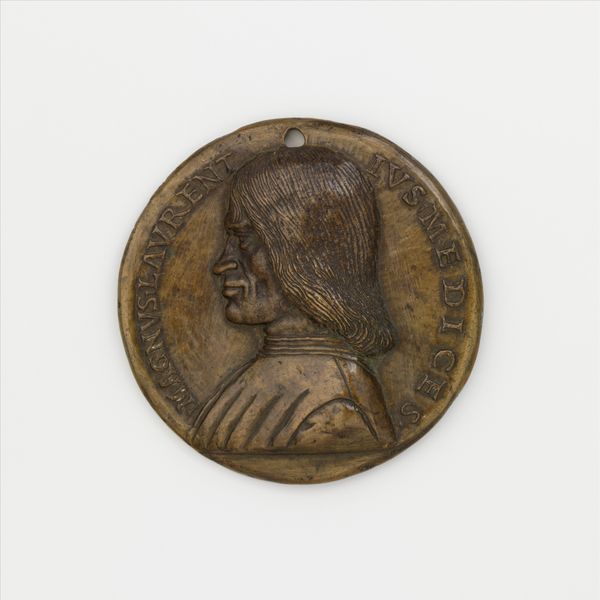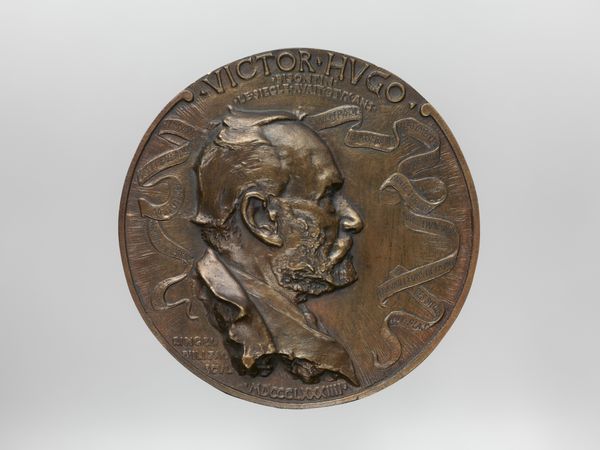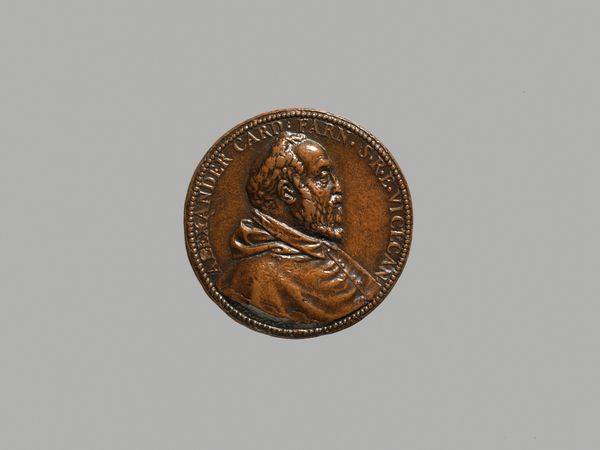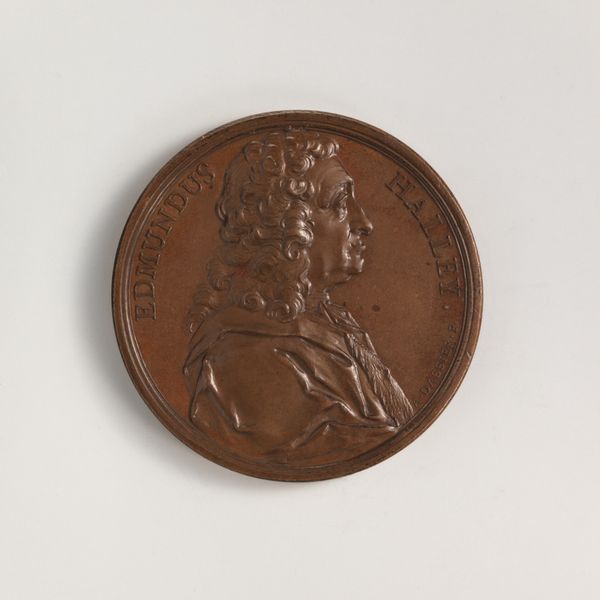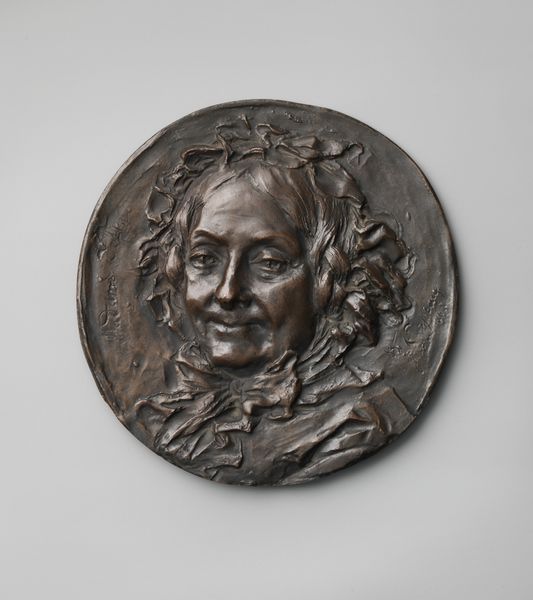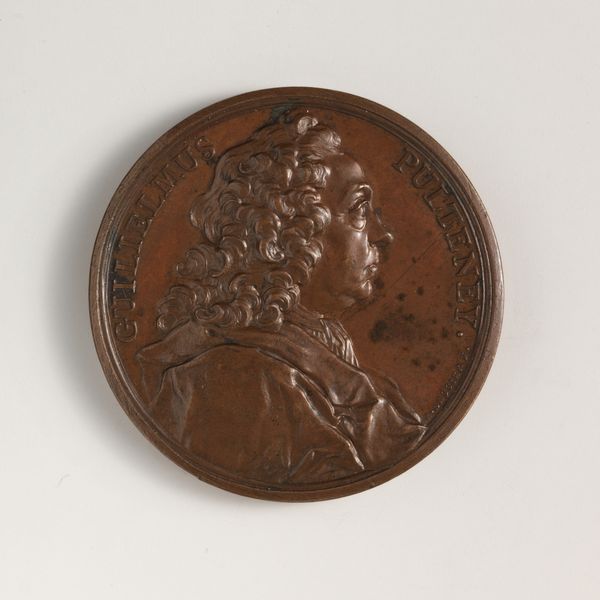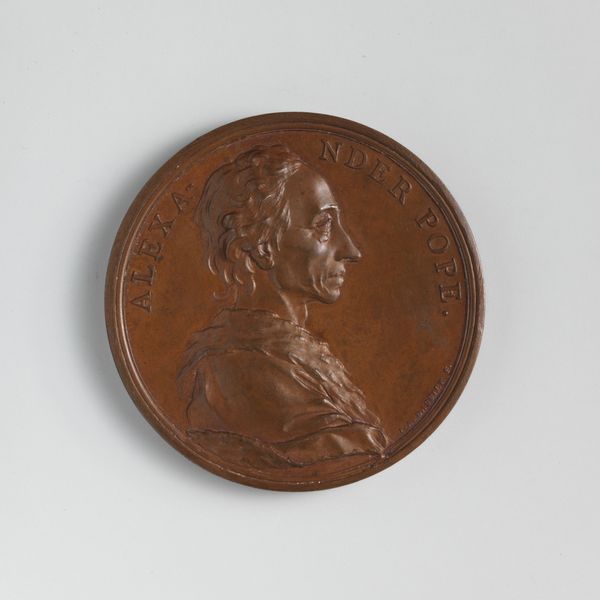
Henry VII, from the English Monarchs series 1731 - 1732
0:00
0:00
metal, sculpture
#
portrait
#
medal
#
baroque
#
metal
#
sculpture
#
sculptural image
#
sculpture
#
decorative-art
Dimensions: Diameter (confirmed): 4.1 cm (41 mm)
Copyright: Public Domain
Curator: Jean Dassier created this striking metal portrait of Henry VII, part of his "English Monarchs" series made around 1731-1732. It resides here at The Met. What's your first take? Editor: Bronze and serious. My first thought is that if history is written by the victors, numismatics—the art of medals and coins—is sculpted by them, too. There's something about immortalizing a ruler in metal, it just reeks of power. Curator: Absolutely. The use of metal is far from accidental; it's chosen for its durability, to quite literally etch Henry's legacy into something that could last millennia. Medals also functioned as diplomatic gifts, potent symbols of royal favor, each bearing a carefully crafted message. I imagine each piece was something of a tiny propaganda piece. Editor: Indeed. The symbolic language speaks volumes. Note the way his gaze is fixed—stern, unyielding. This is a man presenting himself as a powerful and legitimate ruler, someone not to be trifled with. The attire is another signifier; ermine trim means majesty, you know? It creates a sort of halo effect, don't you think? Curator: It does. It makes you think about the burdens they carry as well as the finery of office, that a simple round can suggest so much speaks to Dassier's artistry. Also, I see this as the Age of Enlightenment reinterpreting the past; Dassier worked during an era captivated by history, seeking to codify it, categorize it, and put it on display. He isn’t merely depicting Henry; he’s offering an enlightened, almost rational, glimpse into the royal lineage. Editor: Which, let’s face it, probably involves a healthy dose of romantic revisionism. It's about creating a narrative, isn't it? One that emphasizes continuity, legitimacy, and ultimately, the glory of England. Curator: So, even a simple metal disk becomes a complex interplay of power, history, and artistry. I find it somewhat haunting; so heavy in significance despite its relatively small size. Editor: Agreed. It's a stark reminder that images are never neutral, they're imbued with the values and intentions of their creators and the societies that propagate them. Food for thought!
Comments
No comments
Be the first to comment and join the conversation on the ultimate creative platform.
